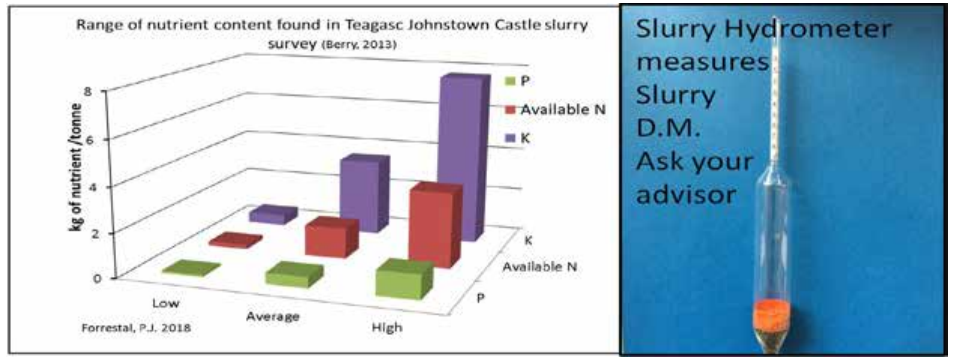Dr. Patrick Forrestal was tasked with informing delegates of manure and its management at the recent Soil Fertility Conference – a special focus was placed on slurry as a fertiliser.
Throughout his presentation, Forrestal asked a number of questions to aid farmers’ awareness when it comes to the value of their slurry.
Giving an example of a 90-cow dairy farm, with 16 weeks of slurry storage – the equivalent of 500,000t of slurry, valued at over €2,000 (€1,000 worth of potassium (K), €500 worth of phosphorous (P) and €600 worth of nitrogen (N)) – he questioned: “If you were buying €2,000 worth of bagged fertiliser, would you accept it with no label?”
If farmers don’t want to leave a crop short, he said, they need to balance its nutrient requirements through the use of fertiliser. This can only be achieved if the nutrient value of slurry is understood.
“We all know that land is expensive to buy and rent here in Ireland and if we are not getting on the correct rate – every time in every field – we are going to be costing ourselves money.
“That really means getting down to the nitty-gritty and have a prescription for each crop and for each field to get up to the top level of the podium,” he said.
How can you know the label for your slurry?
Slurry nutrient content is very variable across farms, he said, and slurry dry matter content is a reasonable indicator of its N and P content.
The latter can be measured through the use of a slurry hydrometer, while sending slurry samples to a lab for analysis – which costs in the region of €60/sample – should also be considered.
From the hydrometer results, farmers can then cross reference the Teagasc Green Book, which provides guidelines on the nutrient content of slurry at varying dry matters.
Touching on the variability between slurry samples, he noted that the “nutrient variability in slurry is a big one”.
A 17-fold difference was observed between slurry of low nutrient density and high nutrient density in terms of N, while the P and K differences stood at 11-fold and 15-fold respectively.
Spreading time and application method
Forrestal also commented on the impact of spreading time and application method, adding: “On average, early on in the year, we are going to have a lower loss of nitrogen compared to the summer.
“If you can target this period for your slurry, you are at a time when growth rates are increasing, the crop demand is up and the loss potential is lower.”
Commenting on research trials from Johnstown Castle, he said the average N loss from splash plate spreaders was 54% (range of 34-82%) and that of trailing shoes was 35% (range of 11-68%).

